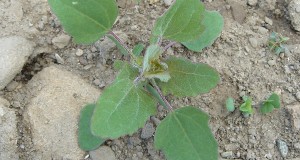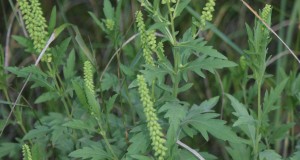By: Evan Elford – New Crop Development Specialist/OMAFRA
Hop production acreage is increasing in Ontario and with expanding production come questions on weed management. Weed management is important around the base of the hop bine to decrease competition for nutrients and moisture. Excessive weed growth can also restrict airflow through the hop yard resulting in higher incidences of disease while also creating a refuge for insect pests.
Currently there are no organic or conventional herbicides registered for use on hops in Canada. A few non-chemical weed control options have been evaluated to better understand their effects on hops including yield and quality of the cones. Multi-year studies have evaluated mulches (plastic and straw), grass cover, and cultivation for on-row weed control options in hop yards. The most effective treatment was plastic mulch applied to the row at the beginning of the season. Openings cut in the plastic over the hop crown permitted growth of the bines through the plastic. This treatment provided almost 100 % control of weeds on the row and the mulch could be replaced in following seasons if damage occurred to the plastic. No differences in yield or alpha acid levels were noted compared to control plots.
Straw mulch, applied at a rate of 10 tonnes/ha across the rows and alleyways, was found to suppress weeds in years one and two of an experiment, however weed cover started to increase in year three. Longer term studies were suggested to properly evaluate straw mulch. No decrease in hop yield was found compared to control plots, however, an increase in alpha acid concentration on plants treated with straw mulch was noted. This may have been due to a change in environmental conditions around the plants (cooler soil temperatures in spring followed by warmer soil temperatures later in the growing season or an increase in light reflectivity from the mulch during the growing season) but these theories were not formally evaluated in the experiments.
A grass cover crop mixture (ryegrass, meadowgrass, creeping fescue, chewings fescue and bentgrass) was effective in suppressing broadleaf weed populations once established on the row. Grass was mown once a month with clippings returned. Competition from the grass sward was found to decrease hop yields, however alpha acid concentrations were similar to control plots.
Cultivation was found to be an effective control for weed cover on the row however it was considered the least dependable treatment during times of high moisture (e.g. spring). No difference in yields or alpha acid levels was found compared to control plots.
Cultural methods for weed management appear to be effective in reducing weed populations in hop yards, although longer term studies may be required to validate treatments. However, it appears that certain cultural methods can be used to obtain acceptable yields and, in some cases, higher alpha acid levels compared to conventional herbicide treatments.
 Ontario Hop Growers' Association The OHGA is a not-for-profit association of hop growers, families and enthusiasts who are interested in supporting the growth of the hop industry in Ontario.
Ontario Hop Growers' Association The OHGA is a not-for-profit association of hop growers, families and enthusiasts who are interested in supporting the growth of the hop industry in Ontario.


